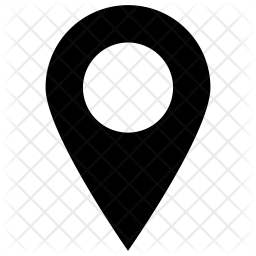So you’ve just logged in to the WordPress admin panel and written a new article for your readers. Before you’re just about to hit the publish button and then return to your daily activities, it’s worth following a checklist to ensure your content is SEO-friendly.
Well, not so fast! If you care that the content you’ve spent precious time crafting will actually be found by people checking for the topic in search engines, you need to ensure that it is SEO-friendly. A checklist to ensure your content is SEO-friendly will help you make sure you’ve covered all the important steps before hitting publish.
In the following article, I’m going to show you how you can easily make the necessary changes so your content will not only be enjoyable to your readers but also so that Google and other search engines will show it to people who search for the topic you just wrote about.
Let’s start.
Keywords
Keywords are still an important part of SEO, so before writing an article, I suggest you do some keyword research to find out how exactly people are searching for what you are writing.
For instance, in Ahrefs, “SEO course” has an estimated global search volume of 11,000 searches every month, while “SEO guide” has an estimated monthly search volume of only 2,000. With this data in mind, it’s clear you should focus your content around the top keywords to attract more readers.
Title
This is the first element of your article that visitors see on the search results page and ultimately what makes them decide if they want to find out more or not. Make sure it is compelling to best attract a wider audience.
It’s recommended that article titles should be anywhere between 50 to 70 characters long, yet Google does not impose a strict limit. Additionally, according to a Zippy study, Google automatically rewrites around 61% of titles to provide people searching with more concise information about the page.
A Checklist to Ensure Your Content Is SEO-Friendly: Meta Description
The second most significant thing that a search shows about your article is the meta description. This description should briefly explain what your article is about and allow the reader to discern whether they will find the right information or not.
According to Yoast, it is preferable to keep your meta descriptions between 120 and 155 characters. There is no way to set up meta descriptions in WordPress without a plug-in, so I recommend installing one, but we’ll discuss more on that in point nine.
URL Slug
This is the actual URL of your article without the domain name. Try to keep this short yet also offer adequate detail about the content while utilizing the main keyword(s) of your article.
According to Google Search recommendations, you should ensure that the URL is simple and descriptive and includes your keyphrase(s). We recommend using separate keywords in your URL with a hyphen and avoiding underscores as well as long, unreadable words or numbers.
Heading Structure
SEO best practice is to use descriptive headings that will help users to navigate through your content with ease. Also, it’s important to structure your content hierarchically—H1 followed by H2 and so on. Make sure that your article has only one H1 tag and that you don’t skip levels of the hierarchy. I recommend checking Google’s recommendations on headings for more details and examples.

A Checklist to Ensure Your Content Is SEO-Friendly: Paragraphs
I recommend breaking your content into easy-to-read paragraphs so users can easily comb through your content and find what they are looking for. Once again, I want to emphasize adding the right keywords in the content, but don’t overdo it; keep it natural.
Avoid Duplicating Content
Google and other search engines love unique, well-researched content. This is why you need to make sure your content is noteworthy and avoid copying large portions of text. When you syndicate, do it carefully using proper attribution with rel=canonical. On the Content Marketing Institute website, there is a guide on how to do so.
Images
Images are important for better illustrating your content. From an SEO perspective, you should consider the following:
- Make sure the image is optimized for the web and is a good size. There are many tools that you can use to optimize your images.
- The image name should explain the content of the image very briefly, like “iphone-13-mini-red.jpg” instead of “iphone.jpg”.
- Describe the content of the image using ALT text, figure captions and figure descriptions.
Again, the Google Search Guidelines offer more detailed recommendations to optimize your images for search engines.
Links (Internal And External)
Search engines see backlinks as “votes” for your content by other websites. As long as you have good votes from websites that are seen as reputable authorities in your niche, search engines will automatically rank your content higher. On Monetize.info, there is an actionable guide on how to get backlinks for a newly published article.
You should also link to other pages with more details about the topic. This is especially important when citing another piece of content.
This also applies to internal links. Add relevant links from your new article to others and update older articles with links to your new content. On Backlinko.com, there is a useful guide about several internal linking strategies you can try.
SEO Plugins
You may consider using an SEO plugin like Yoast, Rank Math, SEO Press, or All in One SEO. These plugins give you instant feedback on your content’s optimization for search engines. They also offer guidelines to help make your content search engine friendly. Plugin development services can also help customize these tools to better suit your specific needs. A checklist to ensure your content is SEO-friendly will help you follow the plugin’s suggestions. It will also ensure you’re ticking all the boxes for optimal search engine visibility.
I encourage you to check them all out and stick with the one that works best for you.
Wrapping It Up: Ensuring Your Content Is SEO-Friendly
This 10-step list is not exhaustive, but it is a good starting point for optimizing your content for search engines.
If you need more details on how to optimize your content, you can always get in touch with an SEO expert or an SEO agency. They can audit your website and content, providing you with necessary guidelines. Additionally, a website support plan can offer ongoing assistance to ensure your site stays optimized and SEO-friendly over time.






